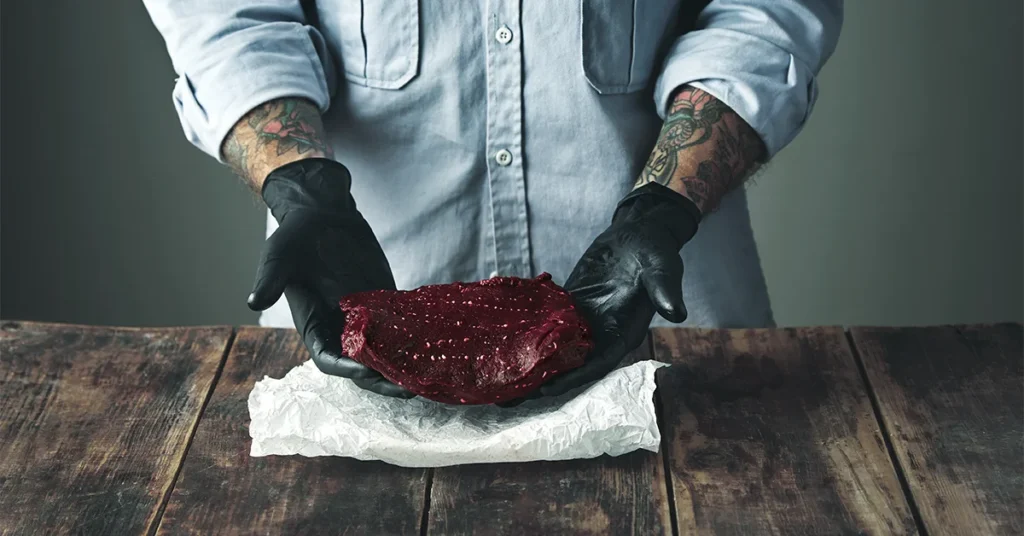There’s something magical about When To Wrap A Brisket. That tender, smoky, melt-in-your-mouth meat is the holy grail for many pitmasters and backyard BBQ lovers. But achieving the perfect brisket isn’t just about the right rub or the perfect smoker temperature. One of the most critical steps that can make or break your brisket is when to wrap it during the cook. If you wrap too early or too late—or not at all—you risk drying out your meat or missing out on that beautiful bark everyone raves about.
we’ll dive deep into the art and science of When To Wrap A Brisket. You’ll learn why wrapping matters, the best timing to do it, and practical tips to help you nail that juicy, tender, and flavorful brisket every single time. Whether you’re a BBQ newbie or a seasoned griller looking to refine your technique, understanding when to wrap your brisket is key to perfect BBQ results.
ALSO READ: Beat ESO Error 307 And Get Back To Tamriel Fast
When To Wrap A Brisket Matters
Before we get into timing, let’s talk about why wrapping is important. When To Wrap A Brisket is a tough cut of meat that requires low and slow cooking to break down the connective tissues and render fat. However, during this long cook, moisture can evaporate from the meat, causing it to dry out. Wrapping your brisket helps lock in moisture and heat, speeding up the cooking process and ensuring juicy results.
There are two common methods for When To Wrap A Brisket:
- The Texas Crutch (Foil Wrapping): Using aluminum foil to tightly seal the When To Wrap A Brisket, trapping moisture and speeding up cooking.
- Butcher Paper Wrapping: Wrapping the brisket in pink butcher paper, which allows some steam to escape while still keeping moisture in, preserving the bark better than foil.
Each method has its fans, and your choice often comes down to personal preference and desired bark texture. But regardless of the wrap you use, timing when to wrap is crucial.
The Brisket Stall: Why Timing Is Everything
The biggest reason pitmasters When To Wrap A Brisket is to get through the infamous stall — a period during low-and-slow cooking when the internal temperature of the meat stops rising for hours. This stall happens because moisture evaporates from the surface, cooling the meat and balancing out the heat coming in. It usually occurs around 150°F to 170°F internal temperature.
If you leave the When To Wrap A Brisket unwrapped during the stall, the bark will form beautifully but cooking time can stretch out longer than expected. Wrapping traps moisture and heat, pushing through the stall faster and helping the meat reach the desired internal temperature sooner.
When Should You Wrap A Brisket?
Wait for the Bark to Develop
The first rule of thumb is to wait until your brisket has a nice bark before wrapping. Bark is the flavorful crust that forms on the outside during smoking. Wrapping too early can soften or ruin this bark, which is a prized part of the brisket experience.
Look for a bark that’s dark and slightly crispy—usually, this forms after 3 to 5 hours of smoking, depending on your temperature and smoker.
Wrap During the Stall (Around 150°F to 170°F Internal Temperature)
Most experts agree that the ideal time to wrap is once the When To Wrap A Brisket hits the stall. When your thermometer shows an internal temperature between 150°F and 170°F, it’s usually time to wrap. At this point, the bark is set, and the stall is underway.
By wrapping now, you trap moisture, reduce evaporation, and speed up the cooking process. This helps prevent the brisket from drying out and pushes it through to the final cooking temperature faster.
Use a Probe Thermometer to Check
Don’t just guess! Using a reliable probe thermometer is the best way to determine When To Wrap A Brisket the right temperature to wrap. Some pitmasters like to probe the flat or the thickest part of the brisket point. Once it reaches the stall zone, wrap it tightly with foil or butcher paper.
If You Prefer a Firmer Bark, Consider Wrapping Later
If you want a firmer, crunchier bark, you can wait longer before wrapping or skip wrapping altogether. But be prepared for a longer cook time and monitor the When To Wrap A Brisket carefully to avoid drying.
Wrapping Techniques: Foil vs. Butcher Paper
Foil Wrap
- Pros: Seals in all moisture, speeds up cooking, produces very tender meat.
- Cons: Can soften the bark and create a steamed texture on the outside.
Butcher Paper Wrap
- Pros: Breathable, keeps bark firmer, retains moisture while allowing steam to escape.
- Cons: Slower cook than foil, can dry out if left too long.
Your choice affects the final When To Wrap A Brisket texture, but the timing to wrap remains the same — during the stall.
Step-By-Step Guide To Wrapping Your Brisket
Prepare Your Wrapping Material: Tear off a large sheet of heavy-duty aluminum foil or butcher paper. If using foil, use double layers to avoid leaks.
Check the Brisket Temperature: Use a probe thermometer to check the internal temp of the When To Wrap A Brisket thickest part.
Wrap Tightly: Place the brisket in the center of the foil or paper. Fold one edge over the brisket, then fold the sides and ends tightly to seal all the juices inside.
Return to Smoker: Place the wrapped brisket back in the smoker, seam side down to prevent leaks.
Continue Cooking: Keep smoking until the brisket reaches your target internal temperature, usually 195°F to 205°F for that tender, pull-apart texture.
How To Tell When The Brisket Is Done After Wrapping
Once wrapped, the brisket will cook faster and the internal temperature will rise steadily. The ideal finished temperature is typically between 195°F and 205°F. But internal temperature isn’t the only test:
- Probe Test: Insert a probe or fork into the brisket. It should slide in and out with little to no resistance, like butter.
- Resting Time: After cooking, let your When To Wrap A Brisket rest for at least 1 hour (wrapped) to allow juices to redistribute. This resting period is vital for juicy results.
Common Mistakes To Avoid When Wrapping Brisket
- Wrapping Too Early: Wrapping before the bark forms will result in a soggy crust.
- Not Wrapping at All: Can cause excessive drying and longer cook times.
- Wrapping Too Late: You might lose time and risk drying the meat if you wait too long.
- Loose Wrap: If your wrap isn’t tight, moisture escapes, and you lose the benefit of wrapping.
- Skipping Rest: Not resting your When To Wrap A Brisket can cause the juices to run out when sliced.
Final Tips For Perfect Wrapped Brisket
- Monitor the internal temperature carefully with a good probe thermometer.
- Choose your wrap based on texture preference—foil for tender, butcher paper for barkier.
- Don’t rush the resting process; patience here equals juicy results.
- Remember, every brisket and smoker is a bit different—use these guidelines but adjust based on your setup.
Conclusion
Knowing When To Wrap A Brisket is a game-changer in BBQ cooking. The perfect timing—usually during the stall between 150°F and 170°F—helps you achieve juicy, tender meat with a beautiful bark. Whether you choose foil or butcher paper, wrapping at the right moment speeds up cooking and locks in moisture, giving you mouthwatering BBQ every time.
With these timing tips, wrapping techniques, and common pitfalls to avoid, you’re well on your way to mastering brisket BBQ like a pro. So next time you fire up your smoker, keep an eye on that thermometer and wrap with confidence for perfect brisket results.
FAQs
What is wrapping a brisket?
When To Wrap A Brisket involves covering the meat with aluminum foil or butcher paper partway through the cooking process. This technique traps moisture and heat, helping the brisket cook faster and stay juicy, especially during the temperature stall.
Why does a brisket stall during cooking?
The stall happens because moisture evaporates from the surface of the meat, cooling it and preventing the internal temperature from rising for several hours. This is a natural part of slow cooking large cuts like brisket.
Can I cook brisket without wrapping it?
Yes, but cooking without wrapping can take longer and may result in a tougher bark or drier meat. Wrapping helps retain moisture and speeds up cooking.
How do I know if my brisket bark is ready for wrapping?
Look for a dark, firm bark that’s slightly crispy to the touch. Wrapping too soon when the bark is still soft can cause it to become soggy.
What temperature should I wrap my brisket at?
Most pitmasters wrap when the brisket hits between 150°F and 170°F internal temperature—right when the stall usually starts.



